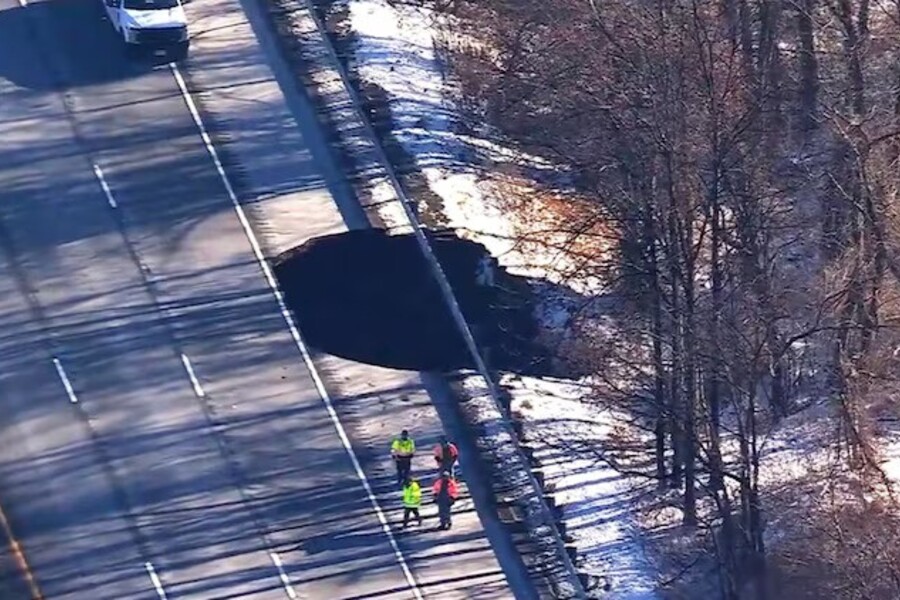A massive sinkhole has disrupted life on Interstate 80 eastbound in Wharton, New Jersey after an abandoned mineshaft collapsed beneath the road. The sinkhole, a striking 40 feet by 40 feet, appeared early Thursday morning, prompting the New Jersey Department of Transportation (NJDOT) to close all eastbound lanes. More than 24 hours later, the closure remains in effect as crews work to assess and repair the extensive damage.
According to NJDOT, the area around the sinkhole has been stabilized, and repair crews began excavation work shortly after the incident was reported. However, the reopening of the eastbound lanes remains uncertain due to the scale of the damage and the challenges posed by unpredictable weather, which is slowing the repair efforts.
This incident brings attention to a significant issue in regions with a history of mining: the hidden risks of abandoned mines. Northern New Jersey, including Wharton, was once a hub for coal and iron ore mining. Many of these mines were abandoned after resources were depleted, leaving behind unstable shafts that can collapse over time. The heavy traffic on Interstate 80 likely added pressure, triggering the collapse and creating a dramatic reminder of the dangers lurking underground.
The impact of the sinkhole has rippled across the community. Thousands of commuters have been forced to find alternate routes, leading to heavy traffic congestion on detour roads. Residents of Wharton and nearby towns are grappling with extended travel times, while local businesses are feeling the pinch as the usual flow of interstate traffic has ground to a halt. Some businesses report a noticeable drop in sales, adding an economic strain to the inconvenience.
Repairing the damage will not be a quick fix. Crews must stabilize the surrounding soil, carefully examine the collapsed mineshaft, and fill the enormous hole to ensure the road is safe for travel. The harsh winter weather has only added to the complexity, making it harder for workers to make swift progress. While NJDOT has made some headway, the scope of the repairs and the need for thorough safety inspections mean that eastbound traffic will remain disrupted for the foreseeable future.
State officials are treating this incident as a wake-up call, urging a closer look at infrastructure in areas with old mining activity. Experts, including civil engineers and geologists, are emphasizing the need for proactive measures to identify and monitor abandoned mines. With modern technology, such as ground-penetrating radar and improved monitoring systems, it’s possible to detect and address potential risks before they lead to catastrophic failures like the Wharton sinkhole.
For now, the timeline for reopening Interstate 80 remains unclear. Commuters, local residents, and business owners are adapting to the detours and waiting for updates as repair crews continue their work. In the meantime, the sinkhole stands as a stark reminder of the unseen dangers beneath us, especially in regions with a long history of mining.
Looking ahead, there’s hope that lessons from this incident will lead to better safety measures and more comprehensive monitoring of old mining areas. The Wharton sinkhole underscores the importance of maintaining and modernizing infrastructure to protect both the public and the economy.
As repairs move forward, discussions about infrastructure safety are gaining momentum. This event serves as a powerful reminder of how essential it is to invest in proactive maintenance and monitoring, ensuring that hidden threats like abandoned mines don’t compromise the safety of roads, communities, and lives.
In the midst of the disruption, the Wharton community is rallying together, showing resilience in the face of adversity. Though the road ahead may be challenging, the hope is that incidents like this will prompt meaningful changes, helping prevent similar events in the future. For now, patience and caution remain the watchwords as officials work to repair the damage and restore normalcy to the region.
